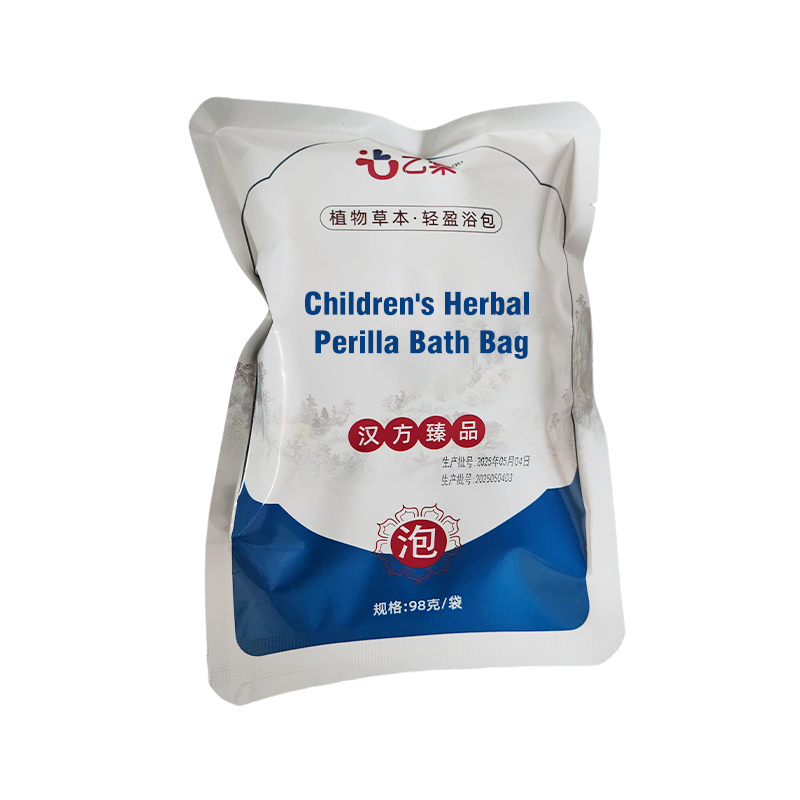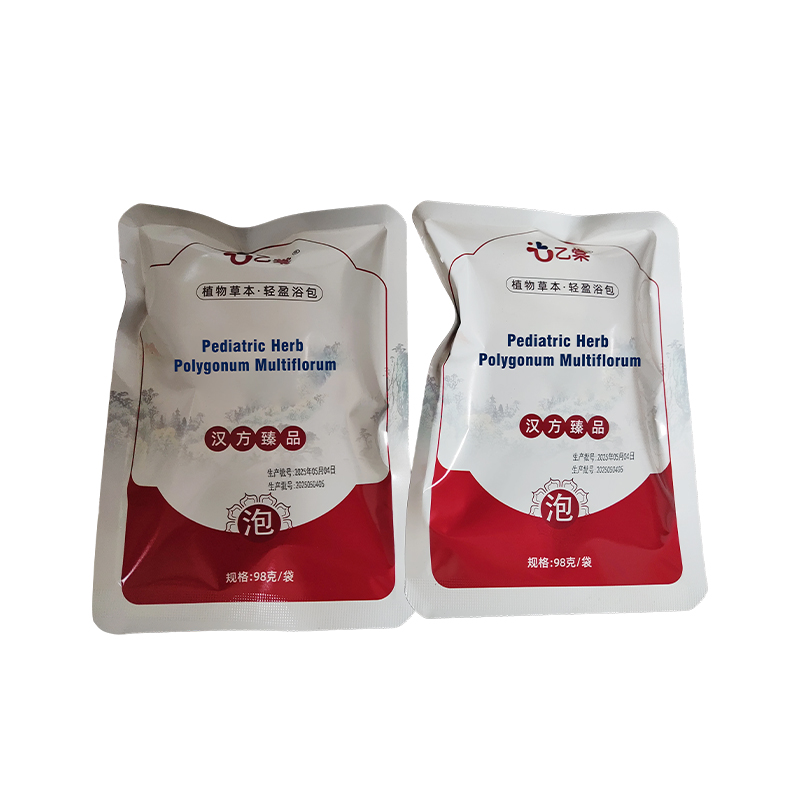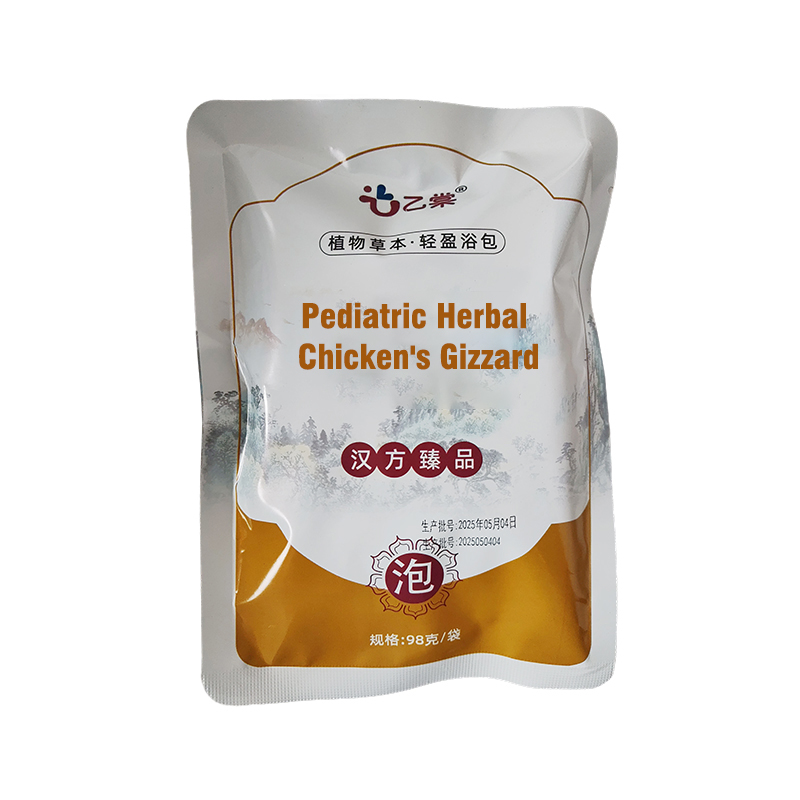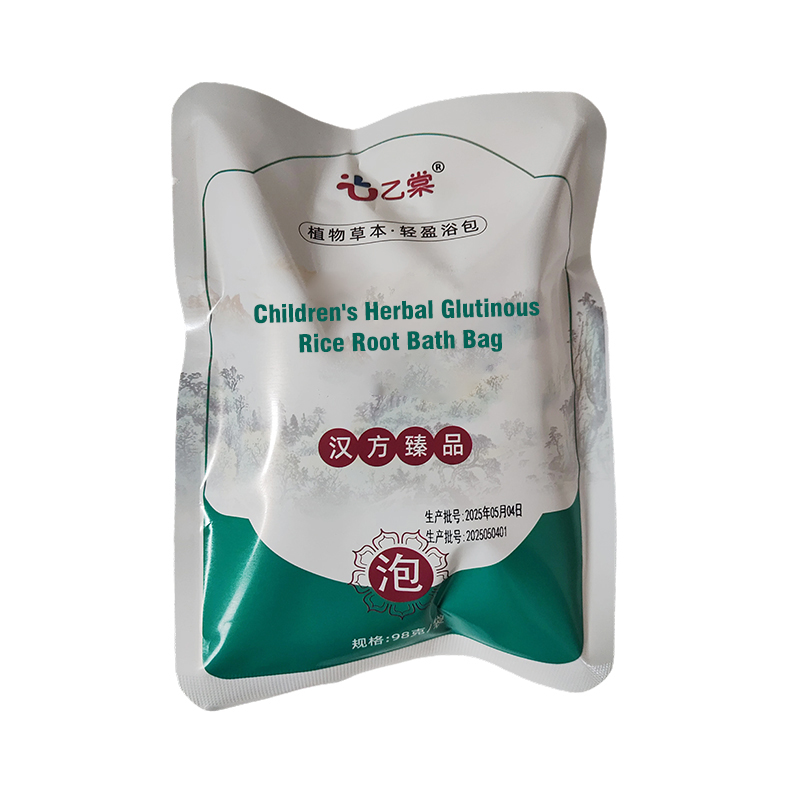How can we achieve long-lasting antibacterial effects in children's herbal sophora flavescens bath packs through formulation design?
Release Time : 2025-09-16
In the formulation of the Children's Herbal Sophora Flavescens bath pack, achieving long-lasting antibacterial effects requires a balanced balance of ingredient activity, mildness, and the specific characteristics of children's skin. This multi-faceted synergistic approach creates a long-lasting protective system. The key ingredient is Sophora flavescens extract, combined with natural antibacterial ingredients, penetration-enhancing technology, and stability optimization strategies to ensure sustained release of antibacterial activity without irritating delicate skin.
As the core ingredient of the Children's Herbal Sophora Flavescens bath pack, Sophora flavescens extract relies on the synergistic effects of alkaloids such as matrine and oxymatrine for its antibacterial activity. Low-temperature extraction is employed to preserve the integrity of the alkaloids, preventing degradation due to high temperatures. Furthermore, microencapsulation technology encapsulates the active ingredients in Sophora flavescens within natural polysaccharides or liposomes, creating a "sustained-release reservoir" that gradually releases the antibacterial ingredients during bathing, extending their duration of action. This design reduces the concentration shock during a single use while maintaining a sustained antibacterial concentration on the skin surface, making it particularly suitable for the daily care needs of children who frequently come into contact with the external environment.
The development of a synergistic antibacterial system is key to improving long-lasting efficacy. The Children's Herbal Sophora Flavescens Bath Pack can be formulated with natural antibacterial plant extracts such as Phellodendron amurense and Honeysuckle, leveraging the multi-target mechanisms of action of these different ingredients to enhance their antibacterial spectrum. For example, berberine in Phellodendron amurense can disrupt bacterial cell membranes, while chlorogenic acid in Honeysuckle can inhibit bacterial metabolic enzyme activity. Together with matrine, these two ingredients form a three-dimensional "attack-block-clear" protective mechanism. Furthermore, the addition of low-concentration natural organic acids such as lactic acid adjusts the skin's pH to a slightly acidic environment, inhibiting bacterial growth under alkaline conditions while also strengthening the stratum corneum's barrier function and reducing pathogen adhesion.
Optimizing permeability directly impacts the absorption efficiency of antibacterial ingredients. Children's skin has a thinner stratum corneum, so formulas must utilize small molecule permeation technology to convert active ingredients like matrine into fat-soluble derivatives, or use ultrasound-assisted emulsification to reduce particle size and enhance transdermal absorption. When adding natural penetration enhancers such as menthol and eucalyptus oil, the dosage should be strictly controlled to 0.1%-0.3% to avoid excessive irritation. Liposome encapsulation technology can further enhance permeability. Its phospholipid bilayer structure mimics the skin's stratum corneum, promoting targeted delivery of active ingredients to the dermis, providing deep antibacterial protection.
Stability design is fundamental to ensuring long-lasting antibacterial effects. Children's herbal sophora flavescens bath packs require the addition of natural antioxidants (such as vitamin E and rosemary extract) to slow the oxidative degradation of matrine. Nitrogen-sealed packaging is also used to minimize exposure to light and oxygen. The choice of preservative system must balance safety and effectiveness. A combination of sodium benzoate and potassium sorbate, or natural preservatives (such as tea tree oil and citric acid) can be used. Preservative dosage should be kept below 50% of the regulatory limit to ensure safety for children.
Balancing mildness is a core principle of children's formulas. While enhancing antibacterial efficacy, irritation should be reduced by adding natural moisturizing factors (such as sodium hyaluronate and panthenol) and soothing ingredients (such as allantoin and bisabolol). The introduction of amino acid surfactants ensures gentle cleansing, preventing soap-based ingredients from disrupting children's skin barrier function. The formula's pH must be strictly controlled between 5.0 and 6.0, matching the slightly acidic environment of children's skin and minimizing interference of antibacterial ingredients with the skin microbiome.
Process optimization is crucial for achieving antibacterial efficacy. Low-temperature homogenization ensures uniform dispersion of active ingredients throughout the formula, avoiding skin irritation caused by localized concentrations. Vacuum degassing reduces oxygen content in the formula, further slowing the oxidation of ingredients like matrine. Aseptic filling techniques are employed throughout the production process to prevent secondary contamination that could affect antibacterial efficacy.
Through the precise extraction of core ingredients, the development of a synergistic antibacterial system, optimized permeability and stability, and a balanced mildness and process control, the Children's Herbal Sophora Flavescens Bath Pack offers comprehensive protection: rapid antibacterial action, sustained action, and barrier repair. This systematic formula design not only meets the needs of long-term antibacterial effect, but also takes into account the particularity of children's skin, providing double protection for product safety and effectiveness, allowing parents to feel more at ease when protecting their children's skin health.







